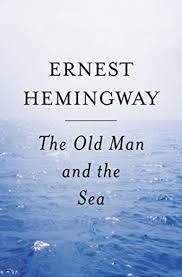Cold War Training Exercise
When I climbed into my bunk in basic training in 1972, the other 39 soldiers sharing my room were men between 18 and 20 years old. None of us were married. We were from nearly 30 states, from both coasts, mostly from the American South and West, but "Jersey"and I were actually from the Northeast--very rare in the active military.
No one planned to make a career of the military. We were all going to "do our time" and get out. Half of us were planning to use the Vietnam War GI Bill to pay for college, although the reality then and now is fewer than one in ten actually would use their education benefits. At our active duty stations, we all referred to anyone who re-enlisted as a LIFER: Lazy Inefficient Fuckup Expecting Retirement. More than 80% of draft-era soldiers served one enlistment and left the military. We shined our shoes, ironed our starched uniforms, told extravagant lies, and had a common enemy in the sergeants in charge of us.
Five years later in 1977, I was a tank commander in Germany. The draft effectively ended in 1973, and formally ended in 1975, ushering in the era of the Volunteer Army. In 1973, new soldiers joining a unit were 19-year-old single males on short enlistments, usually 2 or 3 years.
From 1975 on, when a new soldier joined our tank unit, that soldier was between 19 and 21 years old. He was married, had one child and his wife was pregnant again. That was the reason many of these guys had enlisted. Most had enlisted for four years because the longer enlistment in Combat Arms had a $2,500 bonus. So my new crewman was married, poor and a father.
The great increase in the number of married soldiers between the early and late 70s meant a lot of soldiers were living off base in poverty in Germany because Base Housing went by rank. And if their young wives were not in country for their two-year tour, there would eventually be a night when the soldier received a Dear John letter. Later he would be blind drunk on 80-cent per bottle Mad Dog, MD 20-20. (Actually the MD stood for Mogen David. MD 20-20 was the cheapest drunk possible and it always made me smile that the mostly southern boys swilling the stuff were getting drunk on Jewish wine.)
By this time I was a sergeant, I had re-enlisted so I was a LIFER. They still called us LIFERS, but with more married soldiers, more of them were re-enlisting. By the late 70s, LIFER had little of the sting it had during the Vietnam War. The Army was a job. The Vietnam War was over and until the Gulf War, the military was a pretty safe job.
Then I re-enlisted into yet another Army in 2007. No one made fun of LIFERs. I could not find anyone under 40 who had ever heard the acronym. In 2007 I enlisted in the 28th Combat Aviation Brigade, Pennsylvania Army National Guard. The unit had more than 100 pilots and several hundred mechanics and flight crew. More than half of the 2,000 soldiers in the brigade were at least considering a career in the Army, if they were not already committed to Army life.
The current Army, including active, reserve and National Guard, is a professional army. The Army of World War II really represented a huge cross-section of America. Every family either had a soldier in their family or a soldier next door. After World War II, for the first time in U.S. history, the wartime Army was not demobilized. Most of the soldiers went home, but the draft continued and a sizable force remained ready for war as well as occupying the countries of former enemies.
By the time the draft ended almost 30 years later, the Army represented the south and west much more than the northeast. But it was still not a professional Army. When I re-enlisted in 2007, I was the only soldier that many of my co-workers actually knew. The museum where I worked had a staff of 55 and had been in business for more than a quarter century. I was the third veteran who had ever worked there. When I deployed they had to write a policy for National Guard service. They never had a serving guardsman before. My co-workers, to use the southern expression, had more degrees than a thermometer: more than two degrees per person on average including the maintenance staff. People from cities in the northeast mostly don't even think about military service.
The result is an Army that does not represent America. It is an Army that is easier to send to war because the people who make the decisions never served and the soldiers who go to war will not come from every city, town, village and neighborhood.
A draft Army is much tougher for politicians to send to war, and the soldiers want to go home when the war is over. That, to me, is a better Army for the soldiers and for the nation.



